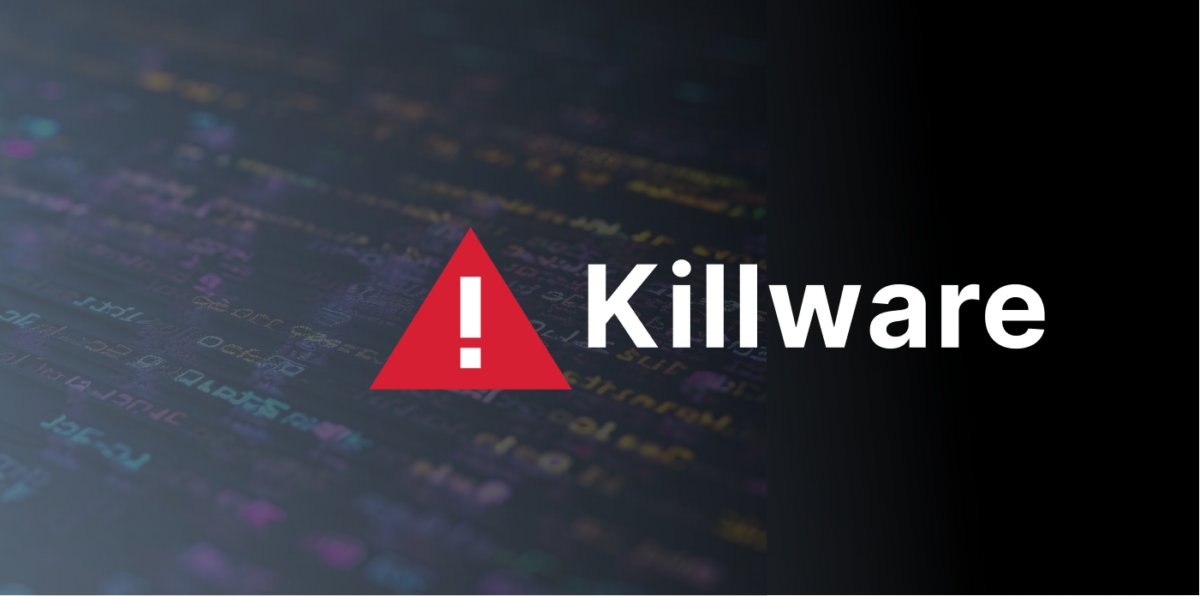Several online threats target our digital lives. But beyond financial theft and data breaches, some threats are far more dangerous, like Killware. Such a type of cybercrime is capable of affecting human lives.
This article discusses the concept of Killware in detail and whether it warrants genuine concern. It also discusses the various ways in which killware is used to inflict harm on you and how you can protect yourself from it.
What is Killware?

Killware is a type of cyberattack designed to do severe physical harm to humans, including injuries or, in extreme cases, even the death of human lives. Such types of attacks can cause damage to both single victims to groups of people.
Killware made headlines recently as cyber attackers targeted Oldsmar, Florida, attempting to poison its water supply. Fortunately, the attack was thwarted, but US agencies, including the CISA (Cybersecurity and Infrastructure Security Agency) and Homeland Security, started expressing concerns that Killware could soon target its first victim, which can be an upsetting possibility.
Most modern electronic devices present in our homes today, such as toasters and smart thermostats, are interconnected to the internet.
Even crucial infrastructure, including dams, hospitals, electricity grids, and police departments, relies on internet connectivity for managing their operations. While this interconnectivity offers various conveniences, like remotely adjusting your living room temperature from wherever you are or facilitating patient check-ups without leaving their homes, it can be a source to initiate killware attacks, and the consequences can be disastrous.
How is a Killware Attack Carried Out?
A wide range of strategies is employed in a killware attack. Predominantly, cyber attackers use email attachments or links to commit malicious acts. In this case, the attacker sends an email to the target containing an attachment or link. Once the victim clicks it, the elements initiate the Killware installation on their computer.
Beyond email-based approaches, other strategies include malvertising or drive-by downloads. Let’s see how these two work.
Malvertising involves attackers embedding malicious ads on legal websites. As a visitor, you may engage with these ads and download the killware in the background. On the other hand, drive-by downloads let you unknowingly download the malicious software by visiting a compromised website without active user interaction.
Differences Between Killware and Ransomware
Killware and Ransomware are two distinct things. However, the same software can be used for both — the primary difference lies in the intent of the malicious actor. Recently, ransomware has become a prevalent concern, mainly driven by a clear financial motive.
Cybercriminals use ransomware to grab control over someone’s private data, and then they ask for money in order to release it. However, if criminals use the same methods to do something that can put human lives in danger, like shutting down a hospital, for example, this becomes Killware. You can think of killware as a form of cyber-terrorism or warfare, which uses the internet as a means to cause harm on a higher level.
Overall:
- Ransomware targets financial gain.
- Killware targets the well-being of individuals through the deliberate cause of physical damage.
Common Killware Targets
Killware attacks are broad in their scope; they can target individuals to cities, or nations. Let’s discuss both scenarios to understand them better.
Individuals
Because people widely use IoT devices today, hackers could remotely infiltrate a system or device, which can lead to physical harm.
Take an example of the smart thermostat’s software. A hacker could introduce malicious code to manipulate temperatures to extreme and intolerable levels. This shows the real-world threat posed to individuals through the compromise of IoT devices by malevolent actors.
In the year 2021, a noteworthy event happened in Texas, where power companies in the state increased temperatures on consumers’ thermostats through remote access.
This occurrence resulted in an intense heatwave, and many people woke up drenched in sweat. Just imagine it, if the unintentional temperature increase of just four degrees resulted in significant discomfort for users, what would happen when remote access falls into the wrong hands?
Infrastructure and Data
Killware attacks also affect large-scale and critical infrastructure. In fact, it is capable of disrupting entire cities or countries. The Oldsmar incident is the perfect example of this, where hackers attempted to compromise a local water treatment plant by increasing the levels of sodium hydroxide in the water supply to dangerous levels.
The incident shows the importance of robust cybersecurity practices, as killware attacks still exist, and you need to be extra careful.
Healthcare
Given the ransomware incidents that have temporarily compelled medical facilities to suspend services, hospitals are the prime targets for potential killware attacks.
Past ransomware attacks on hospitals have prompted heightened awareness, leading the CISA and the Federal Bureau of Investigation to release an advisory offering guidance to healthcare providers on navigating ransomware threats.
Such heightened risks prove that a ransomware attack, if not for financial gain, could potentially escalate into a more sinister form—a killware attack.
Several red flags that can indicate a potential killware attack within the healthcare sector include:
- Sudden changes in medical records
- Missing data
- Unexplained financial records
Success and Impact of Killware

In May 2017, the WannaCry ransomware attack targeted over 230,000 systems across 150 countries. Cyber attackers successfully infiltrated systems, encrypting crucial files and issuing a hefty ransom demand. They even threatened permanent loss if payment was not made.
Notably, WannaCry capitalized on a security flaw in the Microsoft Windows operating system, previously exploited by the US National Security Agency.
Additionally, in September 2016, Matthew Fleischer was at the mercy of killware ransomware. Faced with a demand of $10,000 ransom, he refused to pay. In retaliation, cybercriminals remotely accessed his computer, encrypted vital files, and erased all stored backups. After that, the attackers demanded an additional $10,000 to decrypt Fleischer’s files.
Ways to Protect Yourself from a Killware Attack

Killware is more dangerous and deadly than regular malware, so we must take precautions to protect ourselves before it’s too late.
- Install a VPN: A VPN increases the security of your entire IoT network. It encrypts the activities of all connected devices, reducing the risk of unauthorized access. ExtremeVPN is known for its robust security features and provides privacy without compromising speed, privacy, and security.
- Strengthen your network security: We suggest you secure your Wi-Fi and IoT devices with robust passwords. Use ExtremeVPN’s reliable password generator tool to generate complex, random passwords that are hard for hackers to guess.
- Use trusted antivirus software: Reliable antivirus software detects and eliminates threats before they compromise your systems. To make an informed decision, explore the available antivirus programs on the market and choose the one that suits your preferences.
- Stay vigilant against spam and phishing threats: Many forms of malware, including BloodyStealer, often penetrate systems through attachments that are usually present in spam emails. Hence, we advise you to enhance your protection by understanding how phishing works and implementing preventive measures before something goes wrong.
In addition to these practical tips, you should be aware of the devices in your surroundings. Often, individuals get new gadgets like smart fridges without realizing their connectivity to the internet, making them vulnerable to threats.
By understanding the internet connectivity of all devices in your environment, you take a crucial step toward adequate protection against hacking attempts.
How to Respond to Killware Attacks
Killware attacks don’t happen often yet, but you should still be ready. If you suspect that your device or company has become a victim of Killware attacks, you must act fast. Below, we are discussing some steps to guide you. Although these are mainly for large cybersecurity teams, they can still be useful.
- Deactivate IoT devices: If your device is compromised, unplug it from the primary electrical connection immediately.
- Factory resets: Initiate a factory reset for all of your affected devices. This step will remove the control of hackers over your devices.
- Contact device manufacturer: Reach out to your device’s manufacturer immediately and report the vulnerability. To further minimize recurring attacks, consider requesting device replacement.
- Notify authorities: In extreme cases where you think there is a chance of any physical harm, you must notify relevant authorities. This includes contacting law enforcement and other first responders. Consider reporting to your national cybersecurity agency for comprehensive assistance in preventing future attacks.
Killware is relatively recent, and devising a comprehensive step-by-step prevention plan is challenging due to its broad definition. Hackers may exploit vulnerabilities in cyber-physical systems directly, rendering antivirus scans or quarantining useless to prevent a crisis.

You must prioritize the purchase of certified and secure IoT devices. Additionally, you can protect your digital environment by using reputable antivirus programs and a high-end VPN like ExtremeVPN to protect against various forms of malware.

